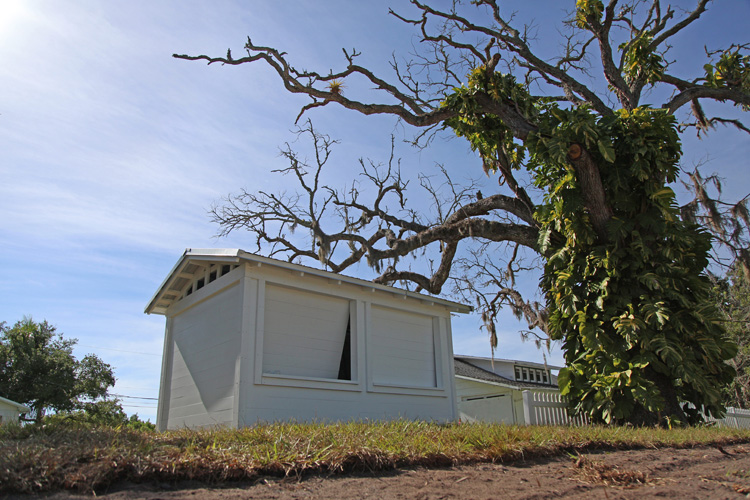
The county is restoring a property formerly owned by one of the barrier island’s first pioneers so that residents and visitors can travel back in time to experience what Old Florida was like at the turn of the 20th century.
The roughly $1.6 million facelift to the 16-acre historical Jones Pier Conservation Area along Jungle Trail includes construction of a replica of the Jones family’s iconic fruit stand, which became a popular tourist destination that was once visited by Walter Cronkite among others.
The project also includes restoration of the family’s cottage that will serve as a museum, and the addition of a one-mile walking trail, community garden and four-acre salt marsh to filter water before it enters the Indian River Lagoon. The site will also include restrooms, a pavilion and parking.
All the improvements to the area, which will be open to the public, are expected to take between 18-24 months to complete.
The county acquired the property for historical preservation in 2008, paying $6.9 million. Jones Pier itself, which was built by the family in 1907 to facilitate shipping farm produce by water, is believed to be the oldest pier on the barrier island. It was restored a few years ago and is open to the public, county officials said.
Current improvements are being funded by a combination of county money and grants from the state and federal government.
The Joneses “settled here because it was a warm climate and it was better for their health. The resources were so abundant here. The land was fertile, and they could fish in the lagoon and provide for their families,” said Beth Powell, the county’s assistant director of parks and conservation resources. “To be able to tell this story for future generations is really important.”
Wendy Swindell, the county’s conservation lands project specialist, echoed Powell’s sentiment.
“We want to keep the spirit of what the Jones family had here in the original area, but we want to make it an elegant feature that the public and use and enjoy,” Swindell said.
The Joneses were homestead settlers who came to the barrier island in the late 1800s, according to county historian Ruth Stanbridge, who is also president of the Indian River County Historical Society.
Three generations of the Jones family tended to the pier, which was an essential dock needed to trade vital goods such as food and medical supplies prior to the advent of trains and before bridges were built to connect the barrier island to the mainland.
The family farmed beans, citrus, mango, coconut and pineapple on the land that they sold at the historic fruit stand from the late 1800s to 1990s, Stanbridge said.
The 1,200-square-foot cottage the Jones family called home was built in 1921. It will be elevated 5 feet to prevent future flooding and converted to a museum of island history that will house artifacts such as a ledger of fruit sales kept by Richard Jones, along with his handwritten records of area visitors and fellow pioneer families who lived along Jungle Trial, which was called Orchid/Narrows Road in those days.
Museum exhibits will also include Jones’ accounts of World War II, when the Coast Guard patrolled beaches on horseback, Stanbridge said.



